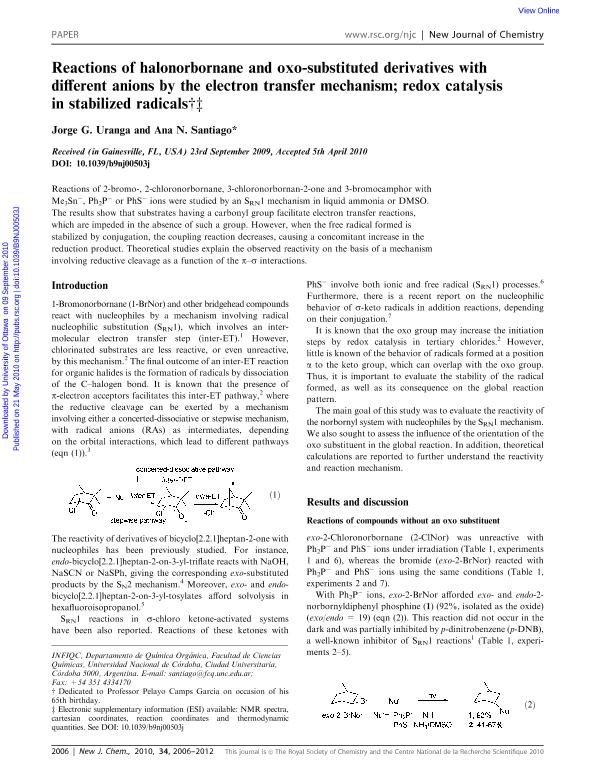Artículo
Reactions of halonorbornane and oxo-substituted derivatives with different anions by the electron transfer mechanism; redox catalysis in stabilized radicals
Fecha de publicación:
09/2010
Editorial:
Royal Society of Chemistry
Revista:
New Journal of Chemistry
ISSN:
1144-0546
e-ISSN:
1369-9261
Idioma:
Inglés
Tipo de recurso:
Artículo publicado
Clasificación temática:
Resumen
Reactions of 2-bromo-, 2-chloronorbornane, 3-chloronorbornan-2-one and 3-bromocamphor with Me3Sn-, Ph2P- or PhS- ions were studied by an SRN1 mechanism in liquid ammonia or DMSO. The results show that substrates having a carbonyl group facilitate electron transfer reactions, which are impeded in the absence of such a group. However, when the free radical formed is stabilized by conjugation, the coupling reaction decreases, causing a concomitant increase in the reduction product. Theoretical studies explain the observed reactivity on the basis of a mechanism involving reductive cleavage as a function of the π-σ interactions.
Palabras clave:
Electron Transfer
,
Redox Catalysis
,
B·Lyp
Archivos asociados
Licencia
Identificadores
Colecciones
Articulos(INFIQC)
Articulos de INST.DE INVESTIGACIONES EN FISICO- QUIMICA DE CORDOBA
Articulos de INST.DE INVESTIGACIONES EN FISICO- QUIMICA DE CORDOBA
Citación
Uranga, Jorge Gustavo; Santiago, Ana Noemi; Reactions of halonorbornane and oxo-substituted derivatives with different anions by the electron transfer mechanism; redox catalysis in stabilized radicals; Royal Society of Chemistry; New Journal of Chemistry; 34; 9; 9-2010; 2006-2012
Compartir
Altmétricas




